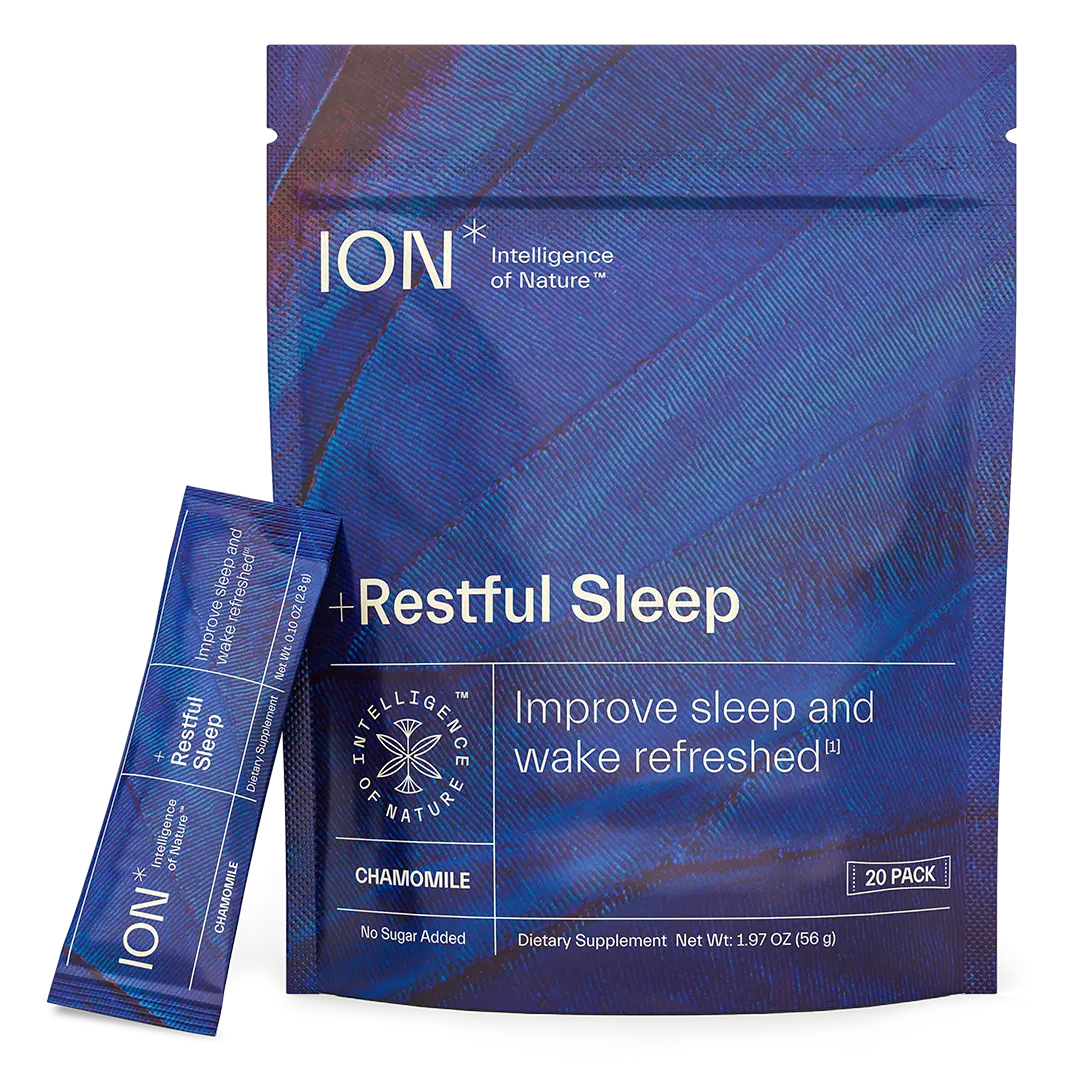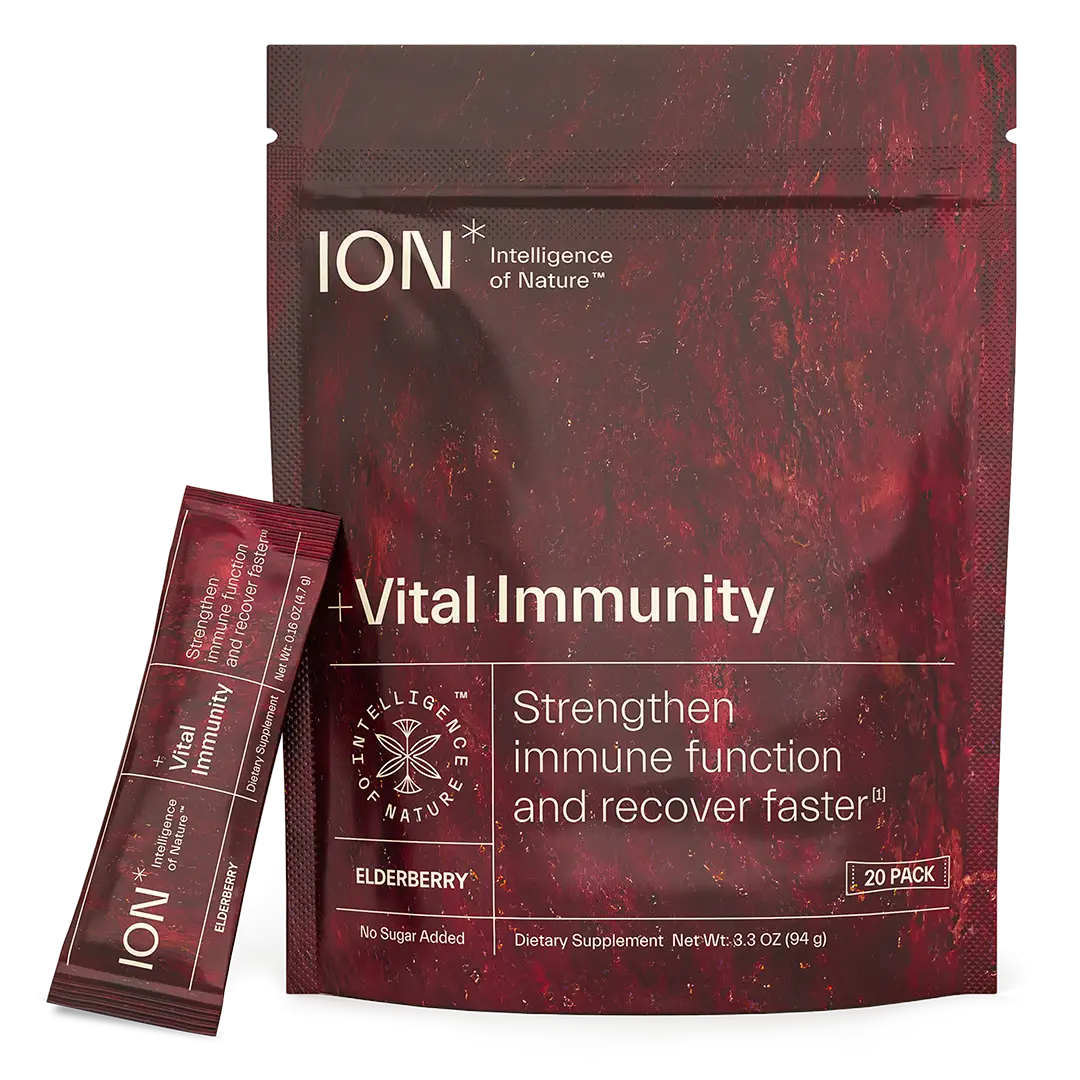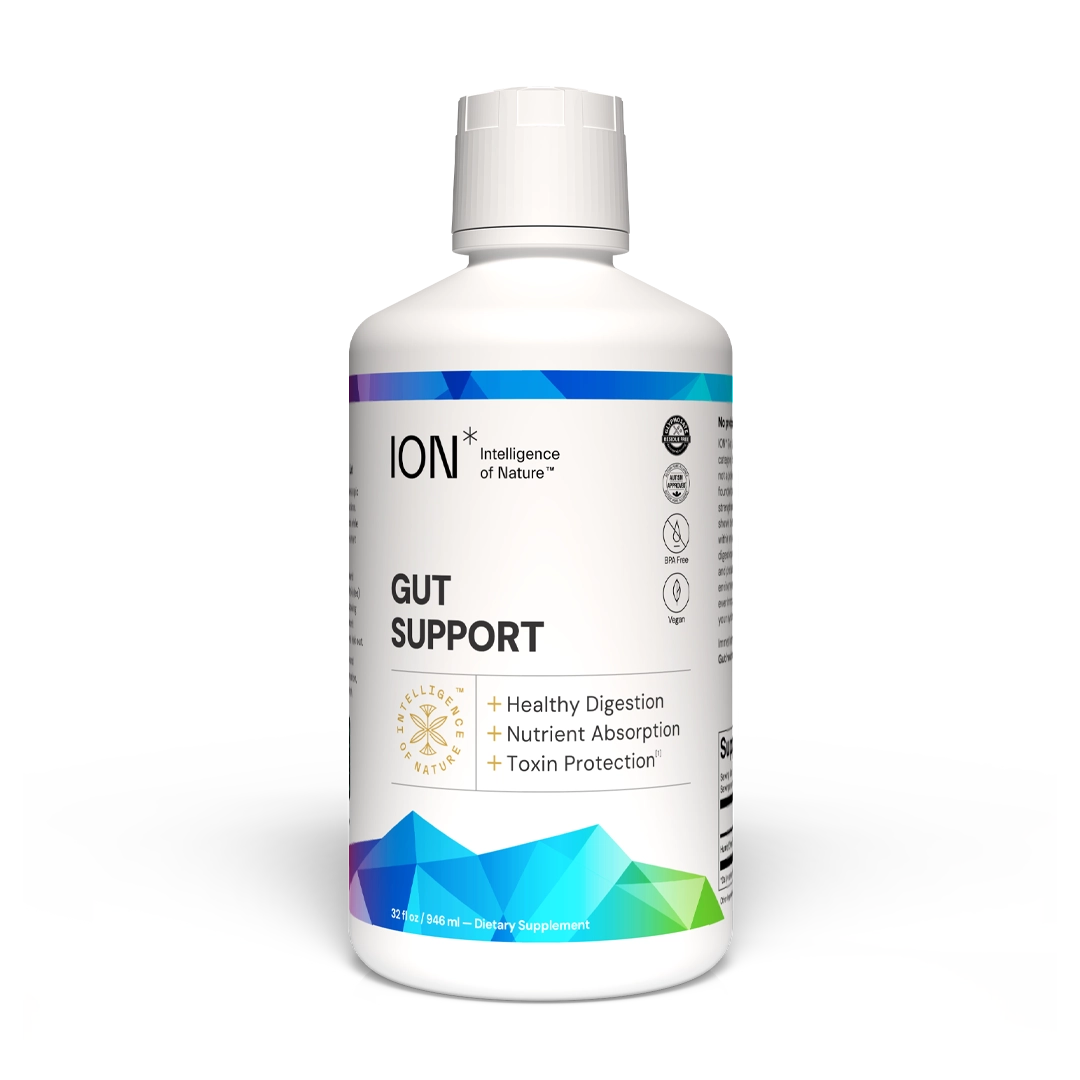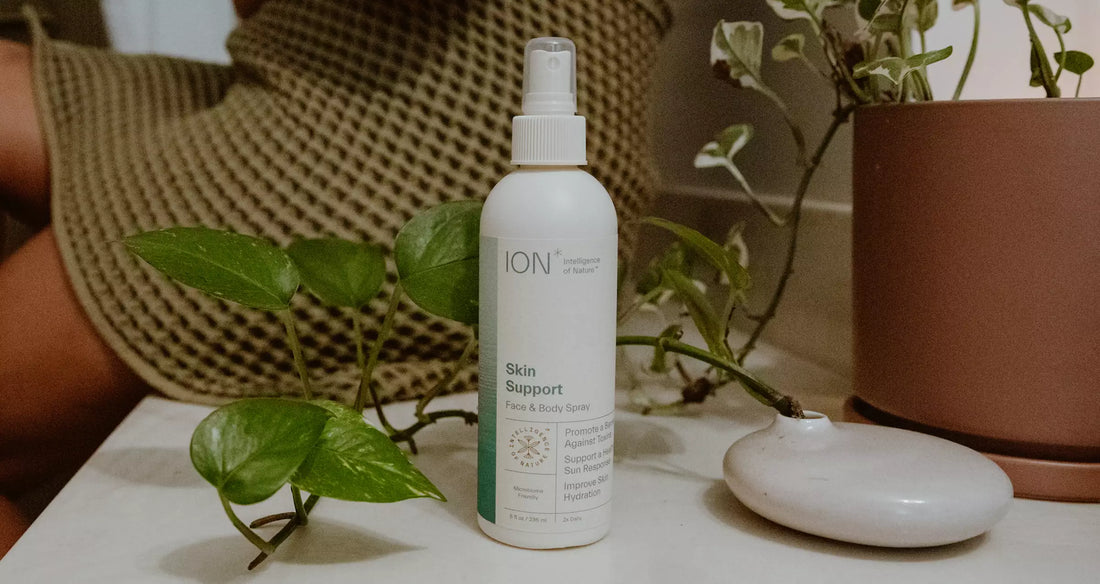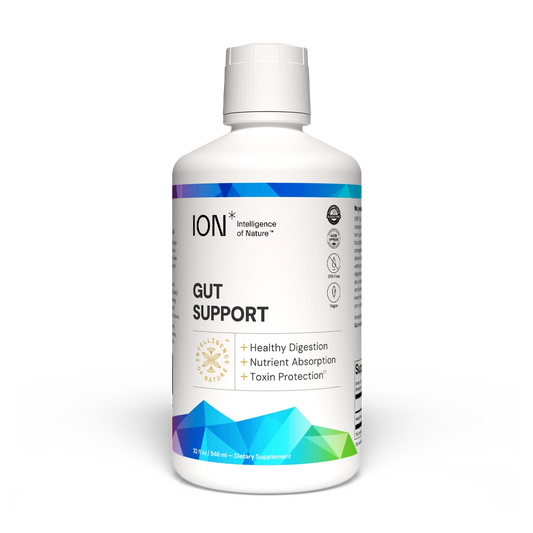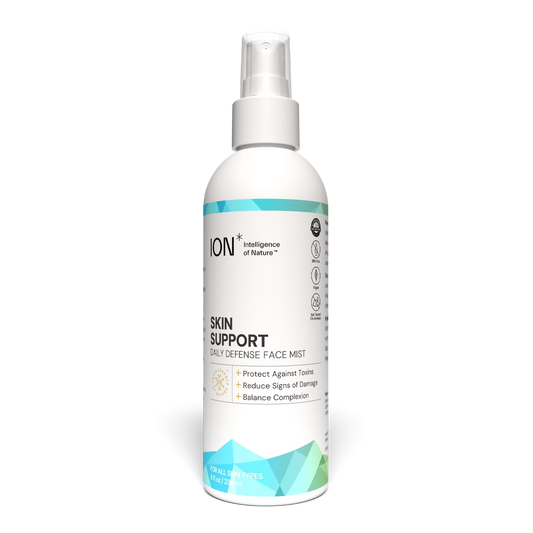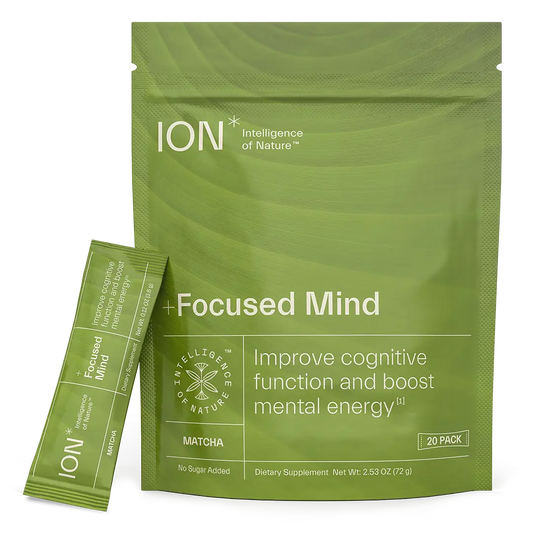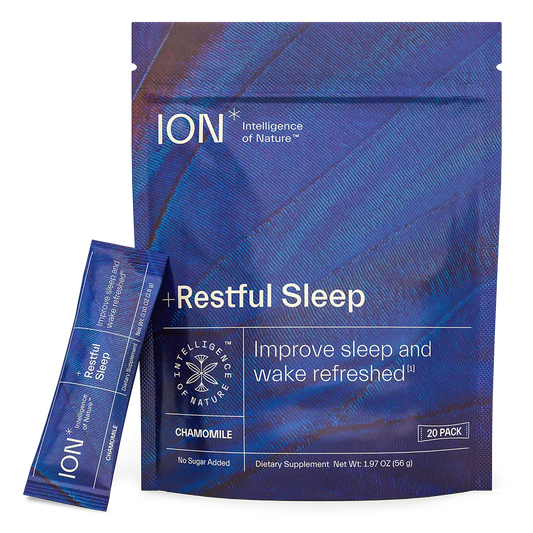Dr. Cindy Fallon Digs into Skin Health
Sun is not our enemy, but it is to be respected. There is growing interest and science related to how we interact with the great ball of fire that fuels life on this planet and it's not as black and white as day and night. Let's dig deep with Cindy Fallon, PhD, and get A's to some of the most pressing Q's on the skin microbiome, potential sunscreen pitfalls, and how to balance our relationship with the sun.
Q: Let's start with the skin microbiome. Is it different from my gut's microbiome?
A: Yes. The skin and gut microbiomes differ significantly, are equally important, and communicate in a bidirectional manner via the Gut-Skin Axis (i.e. they talk to each other!).
While the skin of an average adult covers 25 sq meters (with 10^12 microbial cells) and the gut covers 30 sq meters (with 10^14 microbial cells), both provide a multitude of benefits and they are, collectively, the basis for a strong immune system. They both protect against pathogens, break down metabolites, and maintain a healthy barrier.
They also have unique functions. Gut bacteria, for instance, metabolize indigestible complex polysaccharides into essential nutrients such as vitamin K, B12, butyrate, and propionate. And much like the gut microbiome, your skin flora supports health in a myriad of ways. A diverse and thriving skin microbiome encourages clear skin, rapid healing, and can even help protect you from UV rays.
Dysbiosis (aka, imbalance) of the skin microbiome, on the other hand, can result in common skin conditions including acne, atopic dermatitis, psoriasis, rosacea, dandruff, seborrheic dermatitis, alopecia areata, and even skin cancer.
Q: So, what is the Gut-Skin Axis?
A: Contrary to popular belief, these two systems are not working in isolation.
Broadly, the microbiome is a key regulator for the immune system, as it aims to maintain homeostasis by communicating with tissues and organs in a bidirectional manner between the skin and the gut (the intestinal and epidermal barriers are connected through the blood and lymph systems). Hence, dysbiosis in the skin and/or gut microbiome is associated with an altered immune response, promoting the development of many of the aforementioned skin conditions.
The research and current body of evidence on gut microbiome dysbiosis, dietary links, and their interplay with skin conditions is growing rapidly revealing that every skin pathology is associated with its own unique microbial imbalance and a correlated gut imbalance.
For example, Staphylococcus aureus (aka, staph, a type of bacteria) is associated with skin pathology and is found in much higher levels on the skin of people with atopic dermatitis, better known as eczema - the most common inflammatory skin disease affecting 7% of adults and 15% of children. The relative abundance of S. aureus is correlated with the severity of the outbreak. Further, eczema sufferers usually have a gut microbiome that is disrupted with higher levels of Clostridium and Escherichia (contributing to an inflammatory state) as well as lower levels of anti-inflammatory butyrate and propionate. Simply put, the correlations between eczema and microbial imbalance extend beyond just the skin, to the gut. Further research is needed to understand which came first – dysbiosis of the gut or the skin.
Other common examples are Celiac disease and gluten sensitivity, two widely discussed conditions in the gut health realm, which have also been linked with several skin conditions. Dermatitis herpetiformis is a cutaneous manifestation of Celiac disease, and much like psoriasis, patients can usually clear up skin rashes when shifting to a gluten-free diet for several months up to several years. The rashes generally return when patients resume gluten consumption. Similarly, the strong association between atopic dermatitis and food allergy demonstrates the importance of diet underlying the Gut–Skin Axis.
Remarkably, the Gut-Skin Axis works both ways. Supporting your gut health can support your skin health and vice versa. For instance, they are now finding that certain food allergies may result from a weakened skin barrier and that exposure to UVB (and therefore serum levels of vitamin D) increases the diversity of the gut microbiome!
Q: So, do we need more sun or less?
A: First, a little background on the sun's rays.
The shorter wavelength, higher frequency UVC rays are the most harmful, but they are almost completely blocked by the atmosphere so you will rarely hear the term “UVC" when it comes to sun protection.
UVB rays are 90% absorbed by the ozone layer, mostly blocked by glass, support the formation of vitamin D in our bodies, but in excess can result in sunburn.
UVA rays can penetrate more deeply, form free radicals, and are not entirely blocked by glass. These are the rays in tanning beds and black lights, the dangers of which were not known until recently. UVA rays can cause aging of our skin (wrinkles, age spots, etc.) and can penetrate to the skin's basal layer which has the potential to lead to skin cancer. However, UVA rays also aid in the formation of nitric oxide, an essential molecule that encourages nutrient and oxygen delivery in our blood.
So, clearly not a clear-cut answer. There are both benefits and consequences to sun exposure. While the sun's rays promote the formation of vitamin D and help to release the power of nitric oxide in our blood, they can also cause sunburn, aging, and skin cancer.
Q: How can I protect my skin from the sun, while also gaining the benefits?
A: As with most things, it takes a top-to-bottom, inside-out approach to stay in a healthy relationship with our environment. The important thing to note is “everything in moderation". Experts usually recommend 20-30 minutes of sun a day when UV is <3, avoiding the sun during peak hours (10am to 4pm) if possible, and taking active measures to protect your skin when avoidance isn't possible (covering with loose clothing, hats, etc.)
Also worth noting, know thyself...or more accurately, know your skin and your risk. Do you burn easily? Are you of a paler complexion? Does anyone in your family have a history of skin cancer? We are all so unique. Recognizing your individual skin type is an important part of maintaining a healthy relationship with the sun.
Surprisingly, don't discount nutrition when it comes to sun protection.
It's true. You can, in essence, eat your way to a better personal SPF! Growing research points to the potential of a year-round healthy diet to help reduce your risk for sunburn, sun damage, and skin cancer. The following foods contain a range of beneficial nutrients shown to improve resilience to UV, including beta carotene, lycopene, omega-3 fatty acids, polyphenols in tea, selenium, vitamin C, vitamin D, vitamin E, and zinc.
Snack Some SPF!
- Citrus fruits
- Carrots
- Strawberries
- Green tea
- Pomegranates
- Almonds
- Red grapes
- Leafy greens
- Tomatoes
- Watermelon
While you can't crunch into a couple carrots an hour before you sunbathe and expect any protection, it appears that several weeks of dedicated, healthy eating habits can help build up some resilience. We're in the nascent stages of research, but there are several studies showing that these “edible sunscreens" can lower risk of skin cancer up to 30-40%, lessen genetic damage and visible signs of aging, as well as provide a calculated SPF 2 (meaning staying in the sun 2x longer with no increased damage).
Q: Speaking of SPF, what about sunscreen?
A: This is where things get a little trickier. While sunblock is mostly a tried-and-true effective way to help protect your skin from UV, the jury is still out on the safety of chemical sunscreens. And the efficacy of it all highly depends on several factors including SPF, broad spectrum, and how much you use, among other things.
Regarding sunscreen safety, let's break things down a little more. First, there are two categories of sunscreen – mineral and organic. Despite popular usage, the term “organic" in the sunscreen category does not mean free from pesticides and herbicides. It simply means that these sunscreens contain carbon. In fact, only 2 out of 16 active ingredients used in sunscreens are deemed safe by the FDA, zinc oxide and titanium dioxide, both of which fall into the mineral category.
On the other hand, of the 14 “organic" actives, none have been deemed safe. In fact, two have been deemed as unsafe in the September 2021, Proposed Sunscreen Monograph - PABA and trolamine salicylate.
The remaining 12 are in a strange state of limbo. While zinc and titanium-based actives do not get absorbed through our skin, the chemical actives have long been known (since late 90's) to be absorbed into the blood where they bioaccumulate and persist. In fact, 96% of the US population has oxybenzone in their blood at measurable levels. Studies to establish the safety of these chemical actives are just now being prioritized by the FDA, with no intention of removing these ingredients from the market while testing continues.
Proponents of chemical sunscreens argue that “dose makes the poison", and that there is not adequate data on humans to prove that the presence of these actives causes a health concern. They argue that “we need to prove that these chemicals are unsafe before removing from the market". The proponents of mineral-based sunscreens, on the other hand, argue "we need to deem them safe before allowing on the market".
Q: To that point, what exactly is the health concern with chemical sunscreens?
A: There are two major concerns.
1) While the manufacture of all chemical (“organic") sunscreens involves the use of benzene, a known carcinogen, residual benzene impurity should theoretically not be found in the finished product. However, benzene contamination has caused several recalls including a 2021 Johnson & Johnson recall of both Neutrogena and Aveeno products. Manufacture of mineral sunscreen actives, zinc oxide and titanium dioxide, does not involve benzene.
2) There is ample evidence of endocrine disruption, genotoxicity, and carcinogenicity either of the chemical sunscreen actives and/or their degradation products. All parties agree that there is data showing these effects in monkeys, rats, zebrafish, and other animals as well as in vitro data. While these data have yet to be confirmed in humans, we are not uniquely resilient and somehow immune to the toxicities that would harm other mammals and aquatic organisms. Controlled clinical trials on humans would be unethical, though in reality, uncontrolled trials on humans are ongoing as long as these ingredients remain on the shelves.
Consider that a single application of sunscreen all over the body per instructions is the equivalent of a 200 mg dose of the active. Do this a couple times a day, every day, and you are getting a very high exposure rate. This has been evidenced by the presence in blood, urine, and breast milk in as little as 2 hours from application.
Further, while mineral actives provide UVA protection (the aging rays), the only chemical active that provides UVA protection is avobenzone which is in over 99% sunscreens. However, avobenzone isn't stable and degrades over time, therefore you lose protection. As a result they have to add a stabilizer. Oxybenzone. Both oxybenzone and avobenzone are endocrine disruptors.
And we have yet to even discuss the environmental effects of chemical sunscreens. Some actives such as oxybenzone and octinoxate have been banned by Hawaiin lawmakers because the data is compelling enough to show that they are lethal to certain sea creatures and pose a serious threat to coral reefs and sea life. While proponents of chemical actives argue there is no evidence of direct causation, (as it would be virtually impossible to get this evidence when there are surely multiple environmental insults that are damaging our coral reefs and harming sea life), the fact that the waters are too murky to see which toxin is the biggest culprit should not give us license to continue to contribute to the toxic soup.
When it comes to efficacy, safety, and environmental health, there is little doubt that mineral sunscreens are the way to go. The EWG also has a great search tool, applying scores based on a set of criteria that includes both efficacy and safety of sunscreens.
Q: Why is there resistance to banning these chemical actives when there are safe and effective alternatives in the form of mineral-based sunscreens?
A: The industry has created a wide array of chemical sunscreens that have a luxurious feel that leave no white cast, while the mineral sunscreens of days past were white and sticky. It has become a booming, profitable industry supported by a host of people trialing various products and showing how the sunscreens rub into the skin and look under full make up. Remarkably little attention, however, is paid to efficacy or safety.
Further, the chemical industry says people will not use the mineral sunscreens if their use doesn't result in a positive experience. They argue that the availability of chemical-based sunscreens is the only way to get people to protect themselves from the sun and to address the high rates of skin cancer.
In reality, there have been tremendous improvements made in the look and feel of available mineral-based sunscreens. Formulators have found ways to greatly improve the mineral sunscreen experience. For example, additions of mineral-based tints like iron oxide create products that are appropriate for every shade of skin.
Q: Other than mineral sunscreen, what are some ways to maintain skin health?
A: Lifestyle factors such as diet and hygiene can, along with genetic susceptibility, impact microbial dysbiosis and disease within the gut and skin.
The skin is rich with immune cells and colonized by microbial cells. It's clear that many skin conditions are associated with an imbalance in the skin microbiome but there is a growing connection with imbalances in the gut microbiome.
Basically, avoid anything that harms the gut microbiome as it will in turn harm the skin microbiome: circadian rhythm disruption, altered sleep and eating patterns, poor diet leading to a narrow and unhealthy gut microbiome, smoking, alcohol, and obesity all negatively impact skin conditions. Further, antimicrobial soaps, gels, and sprays all disrupt the skin microbiome as they are designed to kill bacteria.
It's also important to remember that sunscreens are not the only topical products with questionable chemicals. Creams, lotions, makeup, sprays and anything that you apply to your skin (especially on a daily basis) should be scrutinized with a certain level of care for your outermost defensive barrier. Chemicals do not hover on our skin, waiting to be safely washed off with each shower. As tough as your skin is, it's still designed to interact with the environment, and it absorbs what you apply.
Q: What does ION* do to help the skin?
A: ION* Skin Support was designed to complement ION* Gut Support in its use of humic extract to support cellular strength at your barriers. ION* has been shown to upregulate things like lysine (a precursor to collagen formation) and glutathione (a powerful antioxidant), as well as balance reactive oxygen species (aka, free radicals). Further, one of the most powerful benefits of ION* Skin Support is its ability to strengthen tight junctions – seals between the skin cells (aka, keratinocytes), helping to defend against all those toxins that currently exist (whether we like it or not) on the cosmetic market.
Cindy Fallon, PhD, left a 27-year career after discovering that the chemical industry she helped to grow and promote was at the root of her own debilitating health collapse. She has since sought to share her experience and educate on the importance of microbiome health and all-natural solutions to some of our most far-reaching health problems. Cindy earned her PhD in Organic Chemistry from the University of North Carolina, Chapel Hill and her Bachelor of Science in Chemistry from James Madison University, and currently serves as VP of Science and Operational Planning for Seraphic Group (parent company to ION* Intelligence of Nature).
Sources:
-
"Gut Microbiota Functions: Metabolism of Nutrients and Other Food Components - PMC." PubMed Central (PMC), National Library of Medicine, 9 Apr. 2017, 10.1007/s00394-017-1445-8.
-
FDA Proposes Sunscreen Monograph Updates. FDA, Sept. 2021, https://www.fda.gov/media/153965/download.
-
Krstic, Birnur Aral, Ph. D. ,. Good Housekeeping Institute and Zee. Sunscreen Recalls: What Is Benzene and Why Experts Are Worried. Good Housekeeping, 11 Aug. 2021, https://www.goodhousekeeping.com/beauty/anti-aging/a37273260/benzene-in-sunscreen/.
-
Sunscreens, EWG’s Guide. “Beware of Benzene: Shining a Light on Sunscreen Spray Contamination | EWG’s Guide to Sunscreens.” Environmental Working Group, https://www.ewg.org/sunscreen/report/beware-of-benzene-shining-a-light-on-sunscreen-spray-contamination/.
-
Johnson & Johnson Consumer Inc. Issues Voluntary Recall of Specific NEUTROGENA® and AVEENO® Aerosol Sunscreen Products Due to the Presence of Benzene. Johnson & Johnson, 14 July 2021, https://www.jnj.com/johnson-johnson-consumer-inc-issues-voluntary-recall-of-specific-neutrogena-and-aveeno-aerosol-sunscreen-products-due-to-the-presence-of-benzene.
-
"Skin Microbiome Modulates the Effect of Ultraviolet Radiation on Cellular Response and Immune Function." IScience, 26 Apr. 2019, https://doi.org/10.1016/j.isci.2019.04.026.

